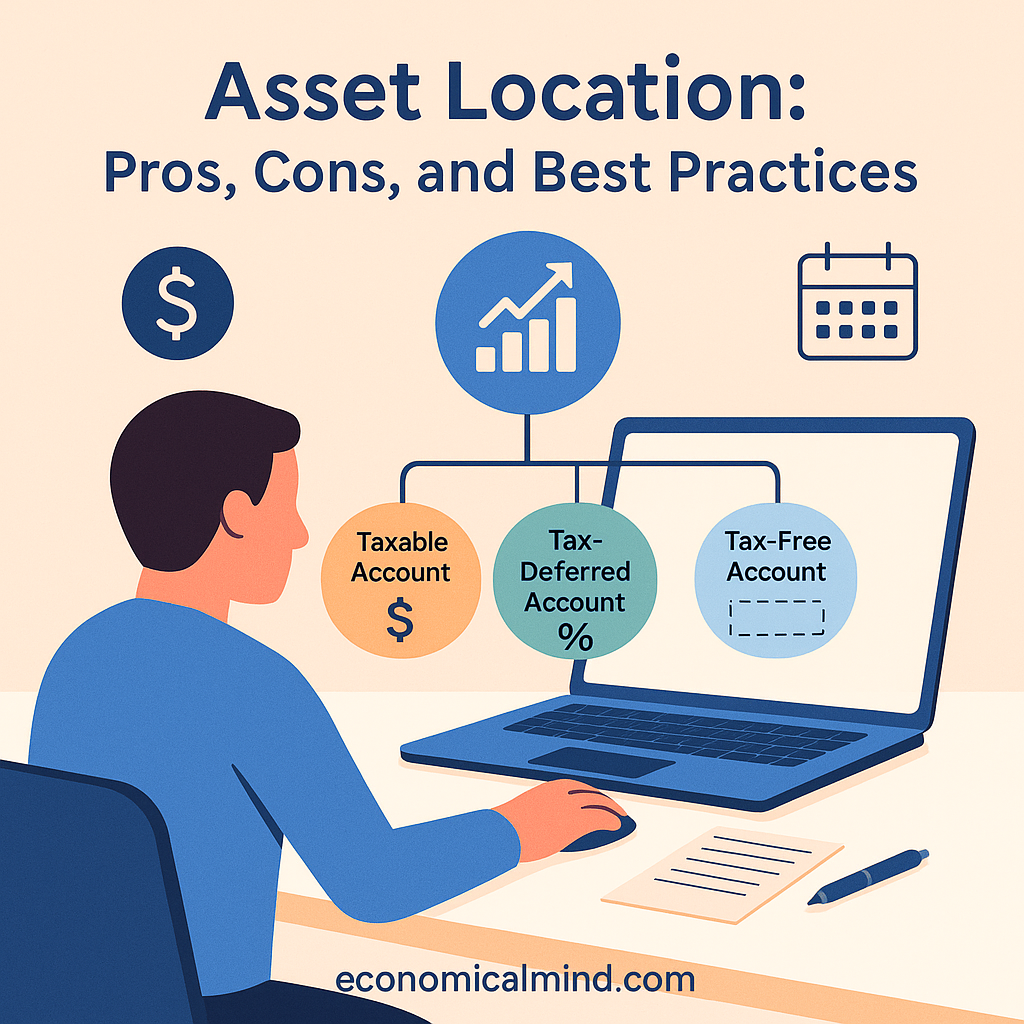
When planning for retirement, most people focus on what to invest in—but not where to keep those investments. That’s where asset location comes in. It’s the strategy of placing different types of investments in different account types (taxable, tax-deferred, or tax-free) to maximize after-tax returns.
Done right, asset location can quietly save you thousands of dollars over time. But it requires some planning and understanding of how different accounts are taxed.
The Pros of Asset Location
The benefits of optimizing asset location go far beyond short-term tax savings.
- Higher after-tax returns: Placing tax-inefficient investments (like bonds or REITs) in tax-advantaged accounts reduces the drag of annual taxes.
- Better portfolio efficiency: Strategic placement helps each dollar of return go further toward your retirement goals.
- Tax diversification: Combining taxable, tax-deferred, and tax-free accounts gives you flexibility in retirement withdrawals.
- Compounding advantage: Minimizing taxes means more money stays invested to compound over time.
- Custom fit: You can tailor your portfolio placement to your personal tax bracket and income level.
The Cons (and Limitations) of Asset Location
As powerful as it is, asset location isn’t a magic bullet—and can sometimes complicate your financial picture.
- Requires multiple accounts: You’ll need to manage taxable brokerage, IRA, and possibly Roth IRA accounts together.
- Rebalancing challenges: Keeping your ideal mix of assets across different accounts can be tricky.
- Limited flexibility: Tax-advantaged accounts often have contribution limits and withdrawal restrictions.
- Changing tax laws: Future tax rate changes can alter the benefits of your current setup.
- Complex tracking: You’ll need to monitor where each investment lives and its tax implications.
For many investors, the added complexity is worth the long-term payoff—but it’s not necessary for every portfolio.
Best Practices for Effective Asset Location
Here’s how to use asset location strategically without getting overwhelmed.
1. Understand the Three Main Account Types
- Taxable accounts: You pay taxes each year on dividends and capital gains.
- Tax-deferred accounts (like traditional IRAs or 401(k)s): Taxes are postponed until withdrawal.
- Tax-free accounts (like Roth IRAs): You pay taxes upfront, but withdrawals are tax-free.
2. Match Investments to Account Type
- Keep bonds and REITs (which generate regular taxable income) inside tax-deferred accounts.
- Place stocks and index funds (with long-term capital gains potential) in taxable accounts.
- Use Roth accounts for growth assets that you want to compound tax-free.
3. Rebalance Intelligently
Adjust across accounts as needed, but try to rebalance within tax-advantaged accounts to avoid triggering taxable events.
4. Review Annually
Your income, tax bracket, and goals change over time. Check your allocations yearly to ensure they still make sense.
5. Coordinate with Tax and Financial Advisors
A professional can help optimize your mix based on current tax laws and personal goals—especially as you near retirement.
The Bottom Line
Asset location might sound technical, but it’s one of the simplest ways to improve after-tax returns without changing your investment strategy. By placing the right assets in the right accounts—and reviewing periodically—you can reduce your tax burden and build a stronger foundation for long-term financial freedom.
